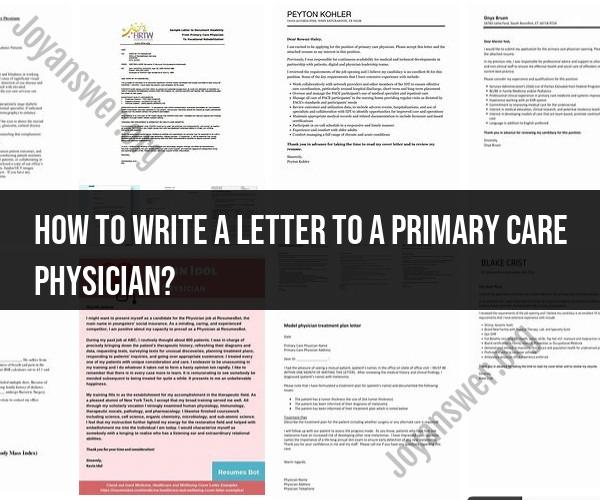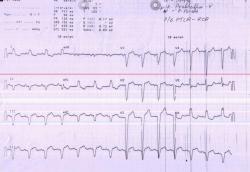How to write a letter to a primary care physician?
Crafting an effective letter to your primary care physician is an important part of maintaining clear communication regarding your health. Whether you have questions, concerns, need to provide updates, or request a prescription refill, a well-composed letter can facilitate a productive conversation with your healthcare provider. Here's a guide on how to write such a letter:
1. Address and Date:
- Begin your letter with your physician's name and address, followed by the date.
- Use a respectful salutation, such as "Dear Dr. [Physician's Last Name],"
2.
- Start with a brief introduction, stating your name and briefly explaining your purpose for writing the letter.
- Express your appreciation for your physician's care and expertise.
3. Provide Background Information:
- If relevant, provide some background information regarding your medical history. Mention any ongoing conditions or concerns.
4. State Your Concern or Request:
- Clearly and concisely explain the reason for writing the letter. Whether it's a specific health issue, a request for medication refills, or an update on your condition, be specific.
5. Describe Symptoms or Changes:
- If you're experiencing symptoms or changes in your health, describe them in detail. Include information such as when they started, their frequency, and any factors that exacerbate or alleviate them.
6. Include Relevant Details:
- If you're requesting a prescription refill, provide the medication name, dosage, and the pharmacy where you'd like it to be sent.
- If you have questions or concerns, list them in a clear, numbered format.
7. Mention Medications and Allergies:
- Provide a list of all current medications you're taking, including over-the-counter drugs and supplements.
- Mention any known allergies or adverse reactions to medications.
8. Follow-Up:
- Express your willingness to follow any instructions or recommendations provided by your physician.
- Ask about the next steps, including when you can expect a response or an appointment.
9. Attachments (if necessary):
- If you have any relevant medical records, test results, or images, mention them in the letter and attach copies.
10. Closing:
- Use a courteous closing, such as "Sincerely," followed by your name.
- Sign the letter by hand if sending a physical copy.
11. Contact Information:
- Include your contact information, such as your phone number and email address, so your physician can easily reach you.
12. Proofread:
- Carefully proofread the letter for clarity, accuracy, and grammar before sending it.
13. Delivery Method:
- Determine the best method for delivering the letter. You can send it by mail, email (if your physician accepts electronic communication), or deliver it in person during an appointment.
14. Follow Up:
- If you don't receive a response within a reasonable time frame, consider following up with your physician's office through a phone call or another letter.
Remember that open and honest communication with your primary care physician is essential for receiving appropriate care and addressing health concerns. Your physician is there to assist you, and a well-written letter can help facilitate a productive dialogue about your health and well-being.













